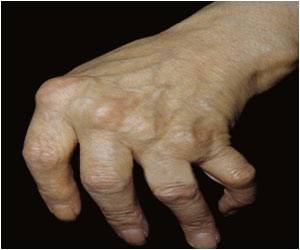With the completion of the first genome-wide association study for Sjögren's syndrome, an international coalition of researchers has identified six new disease-related genes.

Sjögren’s syndrome is an autoimmune disease in which the immune system becomes confused and turns against the body’s moisture-producing glands, damaging the ability to produce saliva or tears. Common symptoms include dry eyes and dry mouth, but the disease can also affect other organs and cause a variety of additional symptoms including severe fatigue, arthritis and memory problems.
The Sjögren’s Syndrome Foundation estimates as many as 4 million Americans have the disease. Despite outnumbering patients with lupus, multiple sclerosis and other more commonly recognized autoimmune diseases, research into Sjögren’s has been slow, said OMRF scientist Kathy Sivils, Ph.D.
"One problem has always been identifying true Sjögren’s patients and collecting enough samples, partly because there’s still disagreement on the criteria for the disease and clinical testing is not easy," she said. "So much work goes into classifying patients that it makes building collections of samples more difficult."
This research required Sjögren’s researchers from around the world putting together about 2,000 patient samples, which were tested against more than 7,000 healthy controls.
The results were exactly what the researchers were hoping to see. In addition to the previously known HLA gene related to the disease, the group was able to identify six new Sjögren’s genes and begin working to understand their functions.
So far, the international team of researchers led by Sivils, called the Sjögren’s Genetics Network, or SGENE, has found these disease-related genes:
- IRF5 and STAT4 which are "master regulators" that activate cells during an immune response
- CXCR5 directs traffic for lymphocytes and may help explain why immune cells target moisture-producing glands.
- TNIP1 is a binding partner with another autoimmune disease-related gene, TNFAIP3, which "cuts the brakes" on the immune system.
- IL12A is one subunit of a protein that acts as a messenger between cells and modulates immune responses.
- BLK is a B-cell gene which might account for increased numbers of antibodies.
"I know it’s a long ways off, but I hope these discoveries will open the door for researchers to find therapeutics that work at the genetic level to stop the disease," she said.
Source-Eurekalert
 MEDINDIA
MEDINDIA




 Email
Email





